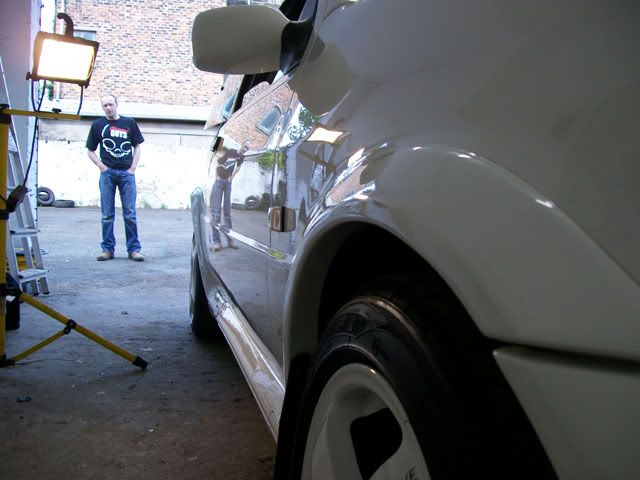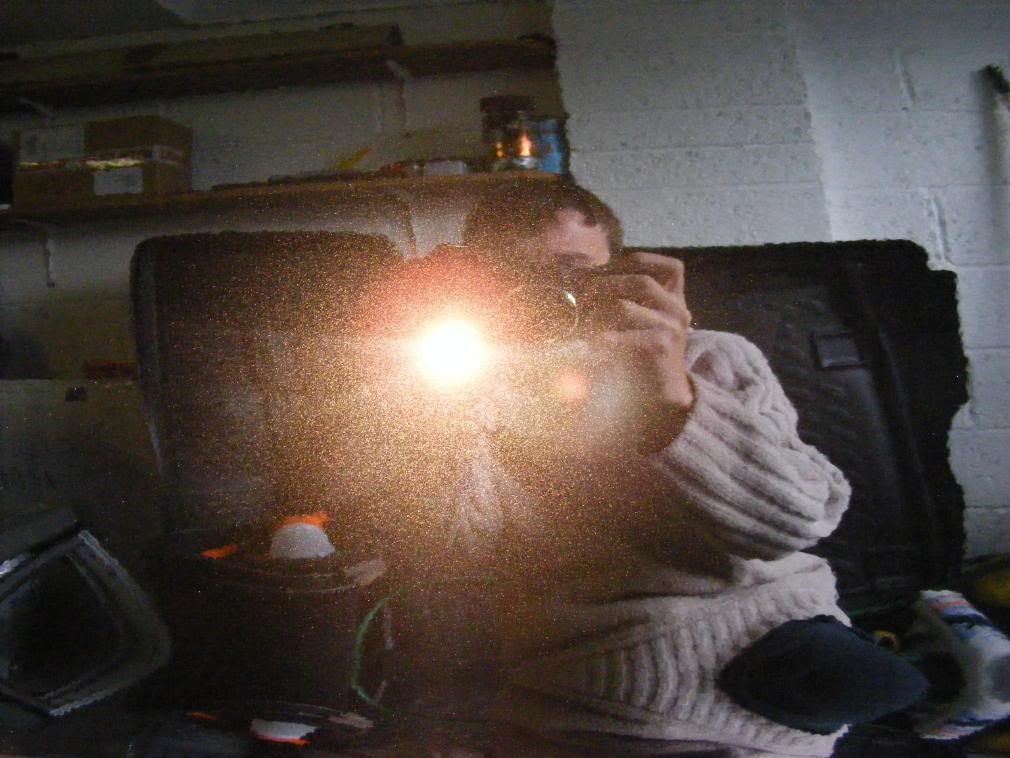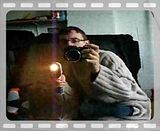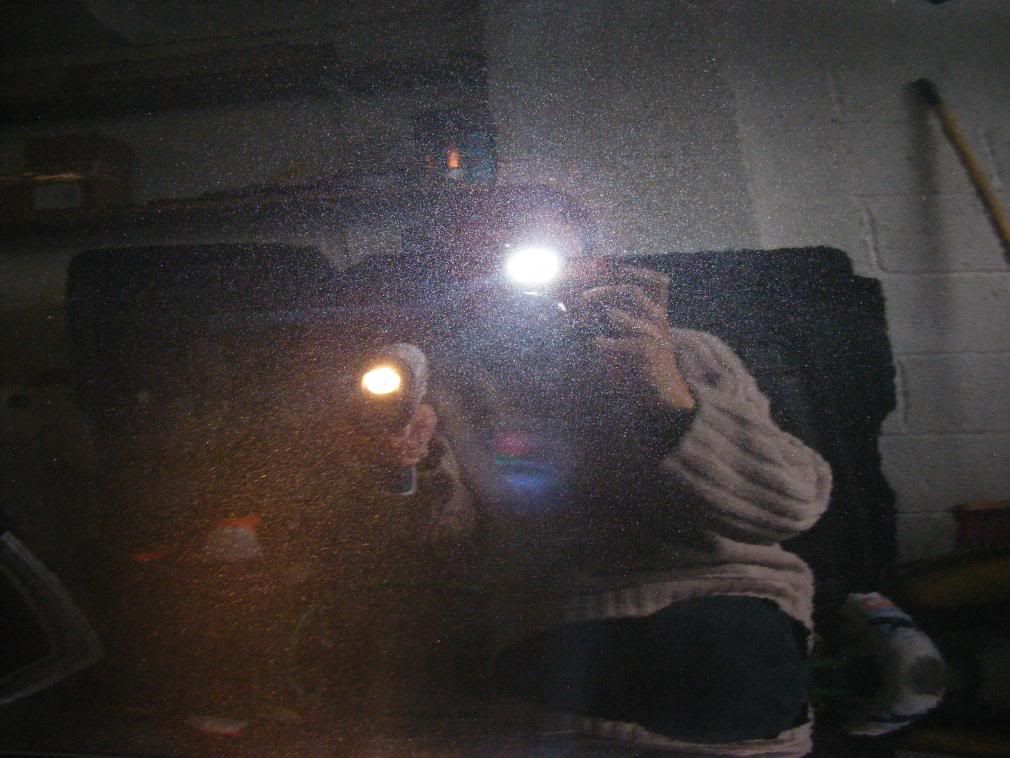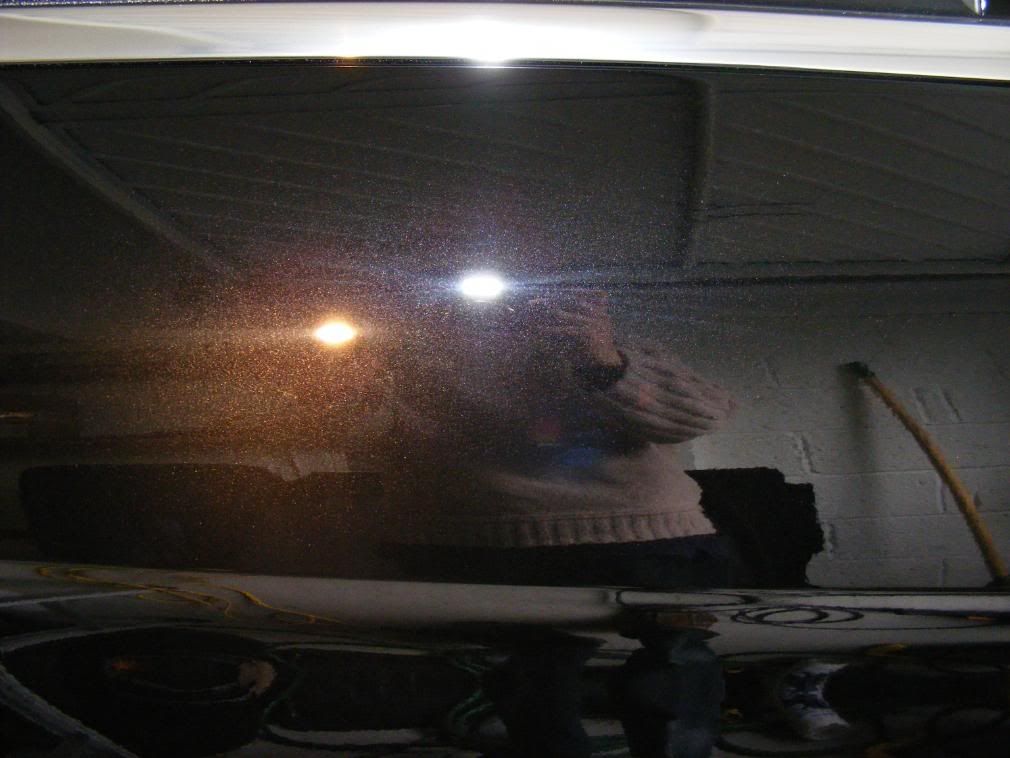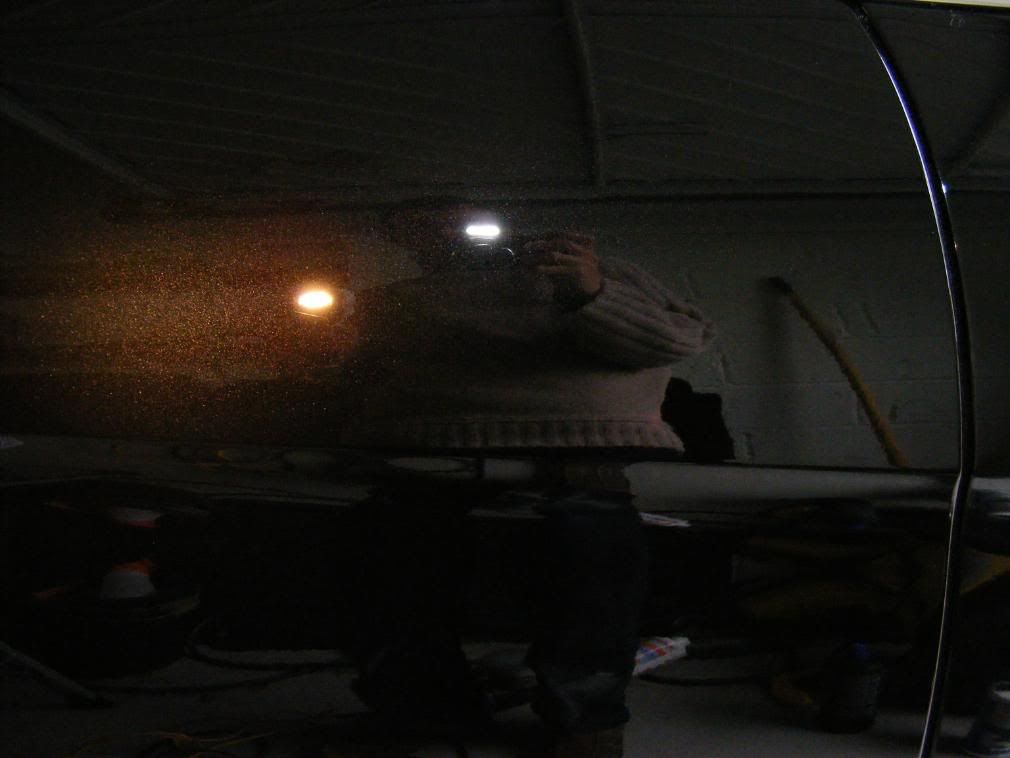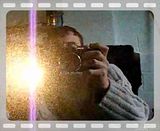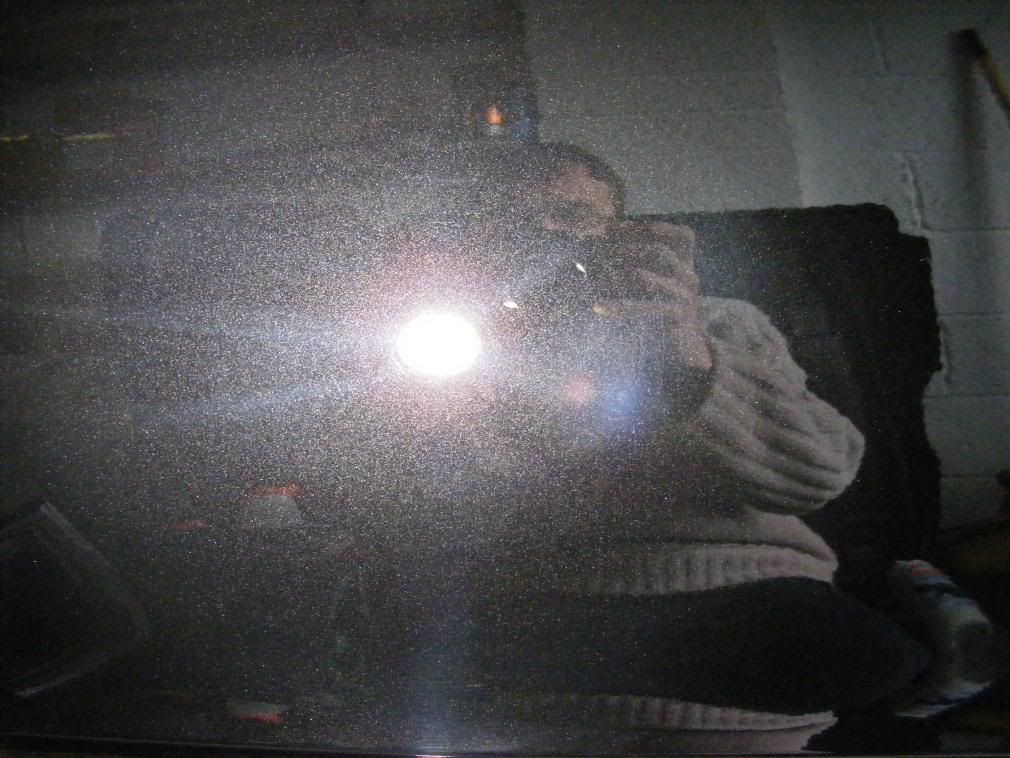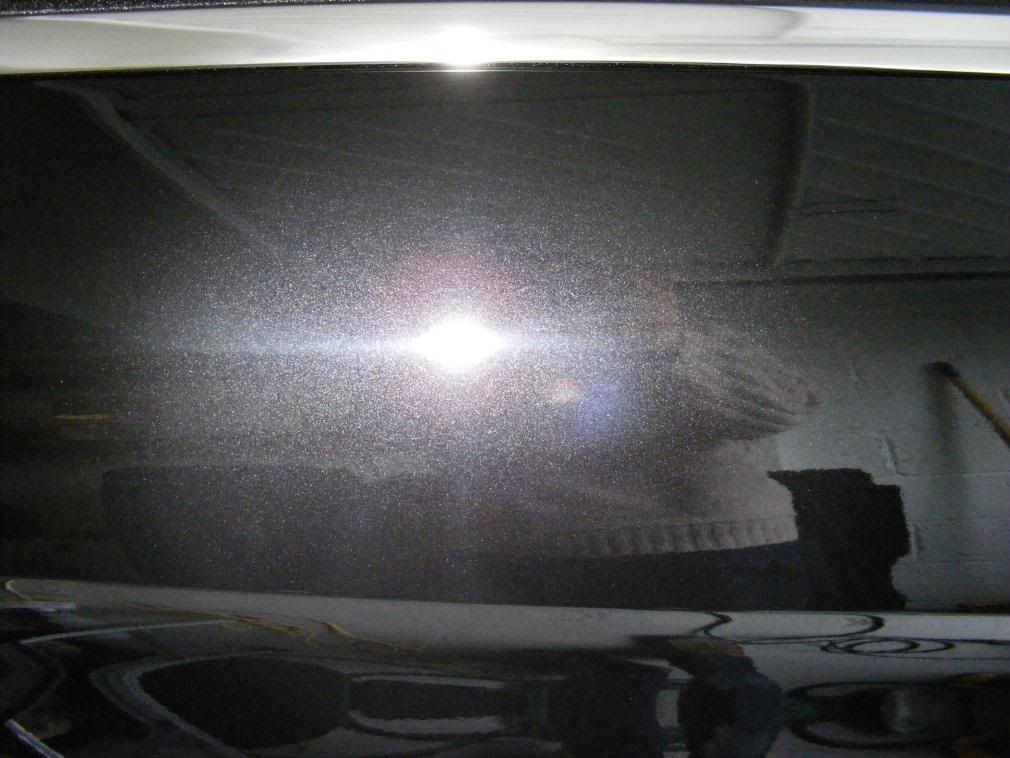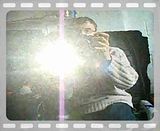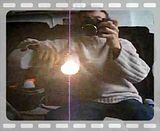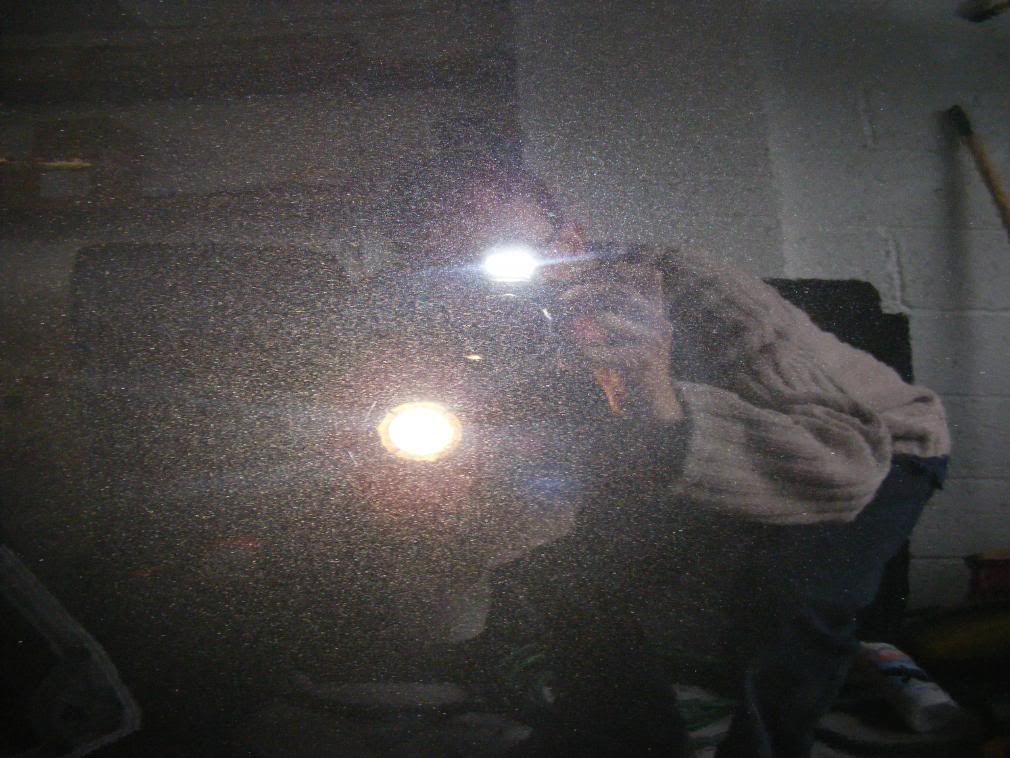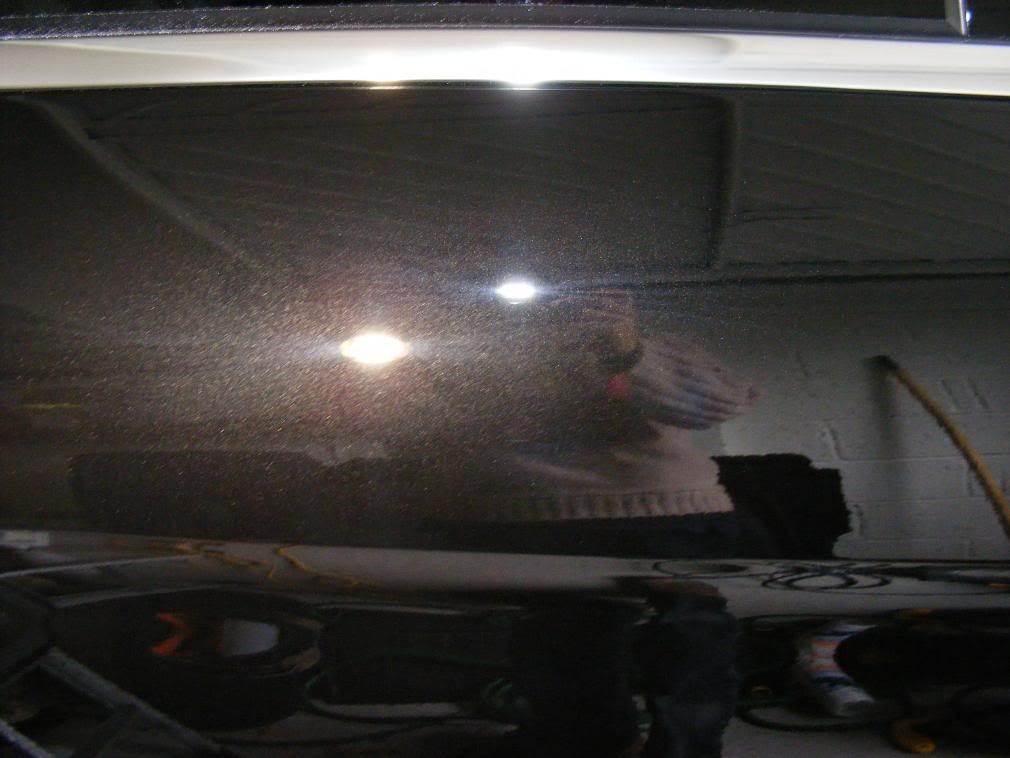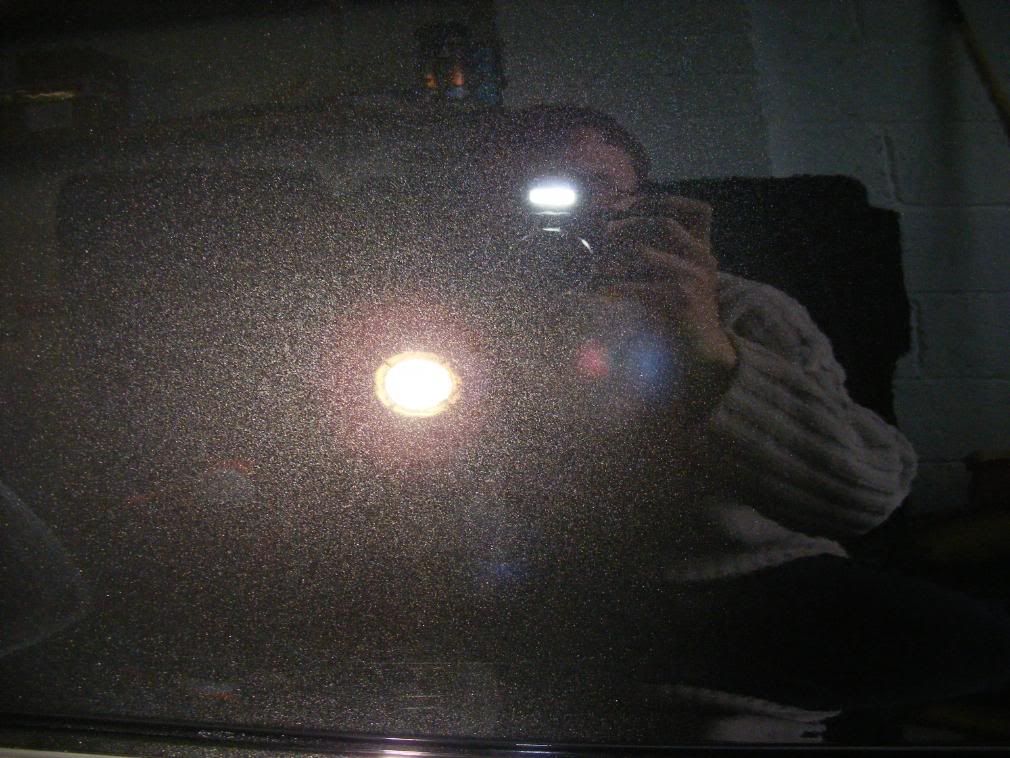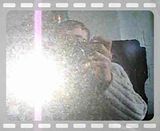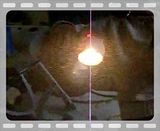light sources and considerations.
A question often asked is what light sources are best for highlighting swirls, and there are a great many on the market which offer that ability. A popular choice is the 500W halogen light readily available from B&Q, Screwfix etc and as the photograph below highlights they are very good at highlighting swirl marks:
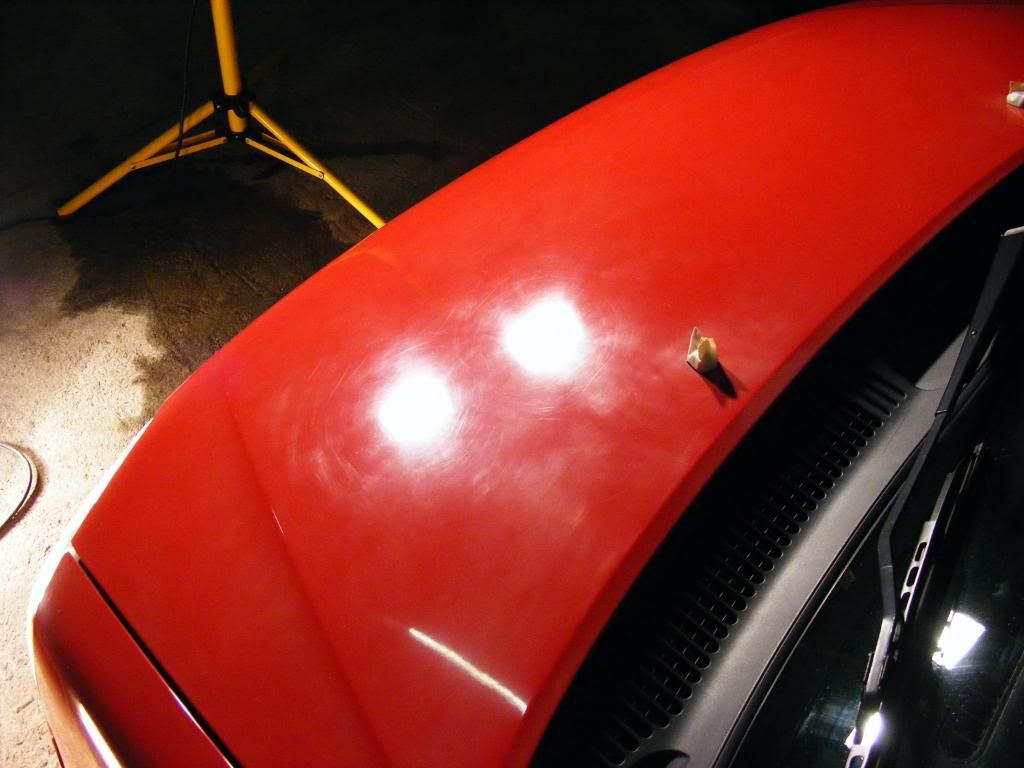
And also good at RDS:
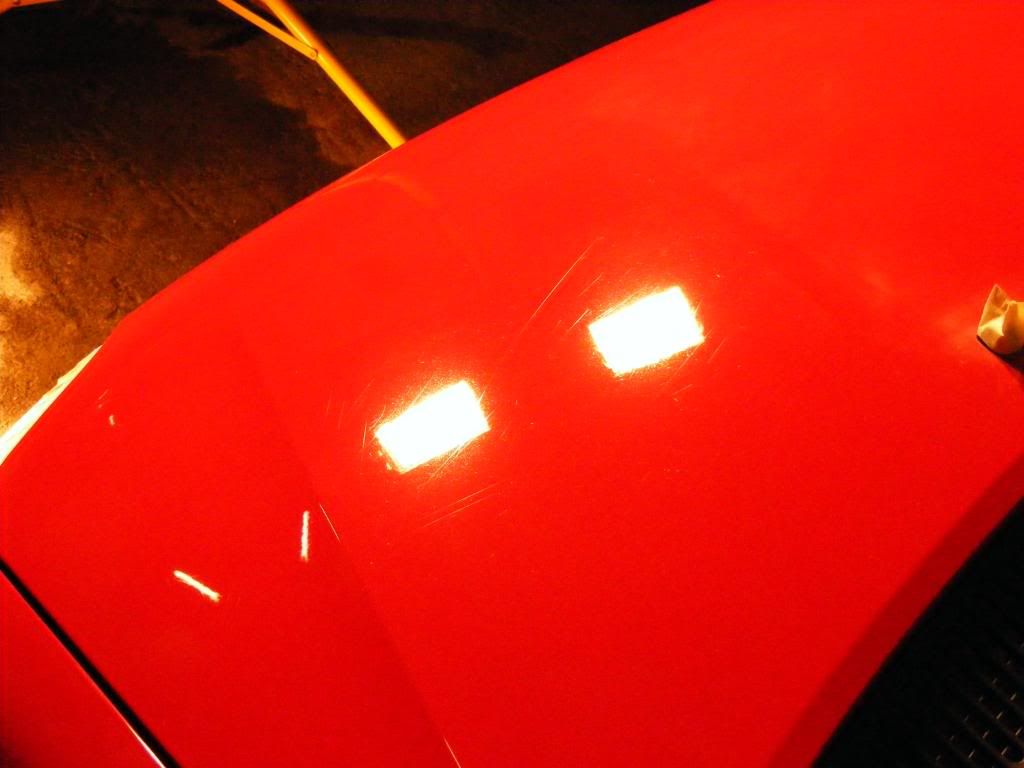
However, 500W halogen lights are not completely flawless, and do have quite notable limitations when it comes to spotting lighter marring, especially hologramming left by a rotary polisher. The example below clearly highlights this.
Below is a picture of the paint finish taken using 500W halogens to assess:
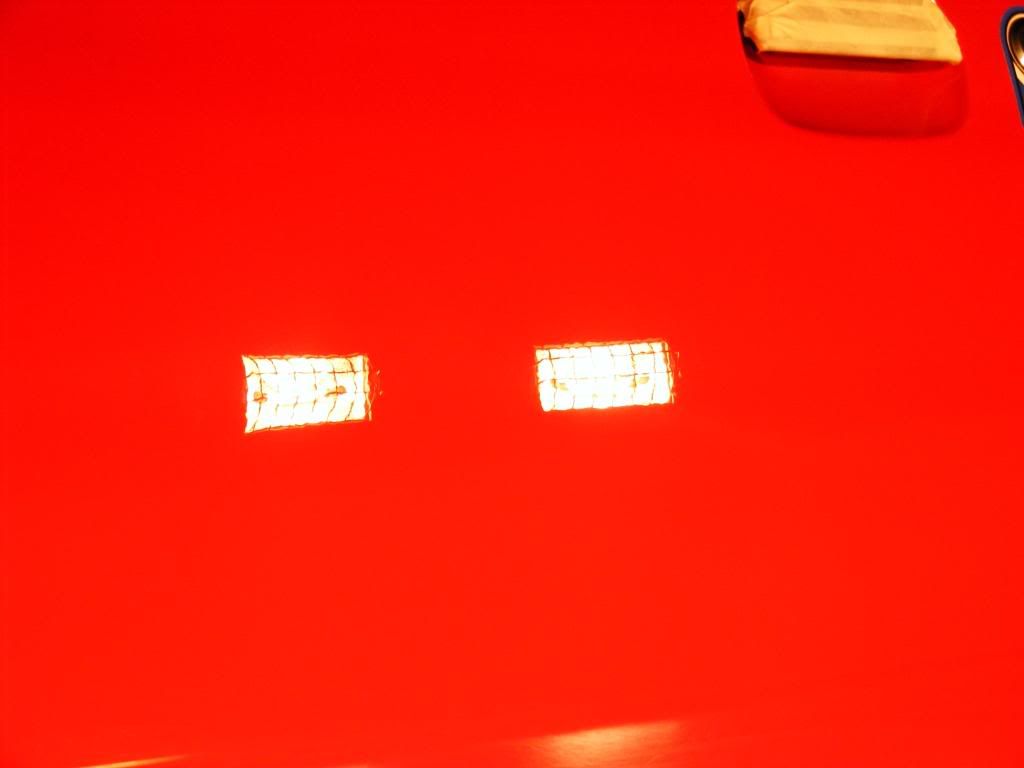
The finish looks perfect! Good clarity evident. No sign of any marring. The truth of this finish is quite different however, as the Sun Gun highlights on the same area:
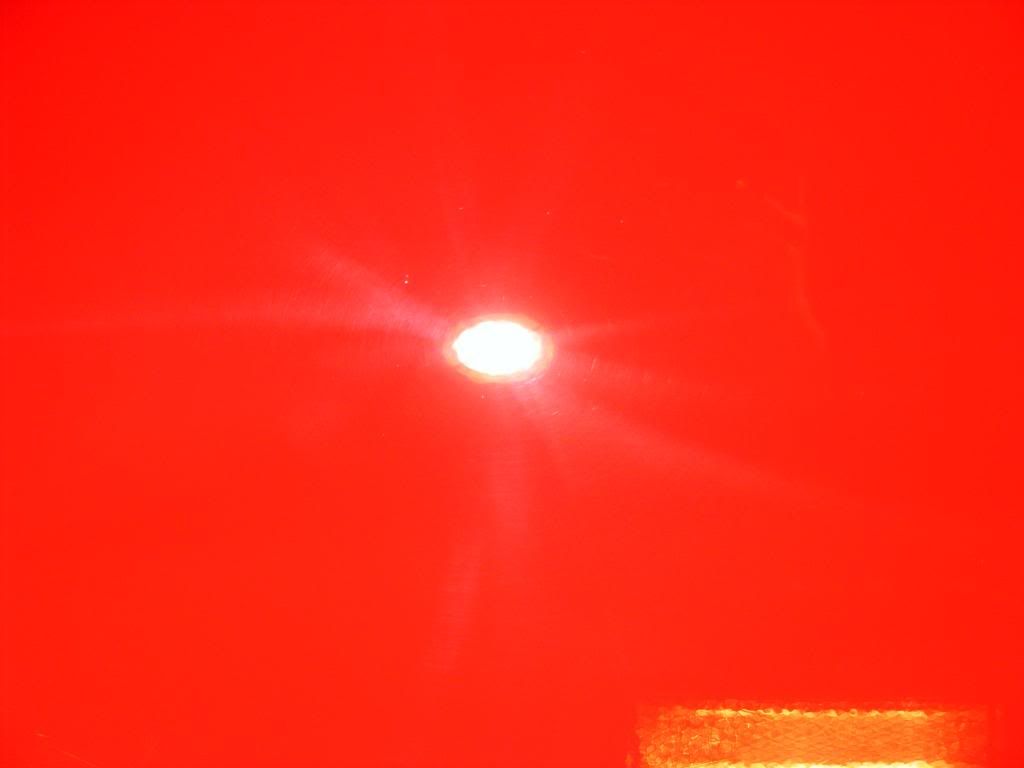
Very definite hologramming! And this was not evident using the halogen lights... The Sun Gun is a very reliable source of light for assessing paintwork at all angles, the 500W halogens hid these holograms at all angles of viewing and only with very careful movement of the light source and examining the finish very closely was any evidence of the marring picked up!
So if you are using 500W halogens as your sole light source, be very careful of what they can hide!
As a further example, here's the finish on the car examined with the 500W halogens both before and after the hologram removal:

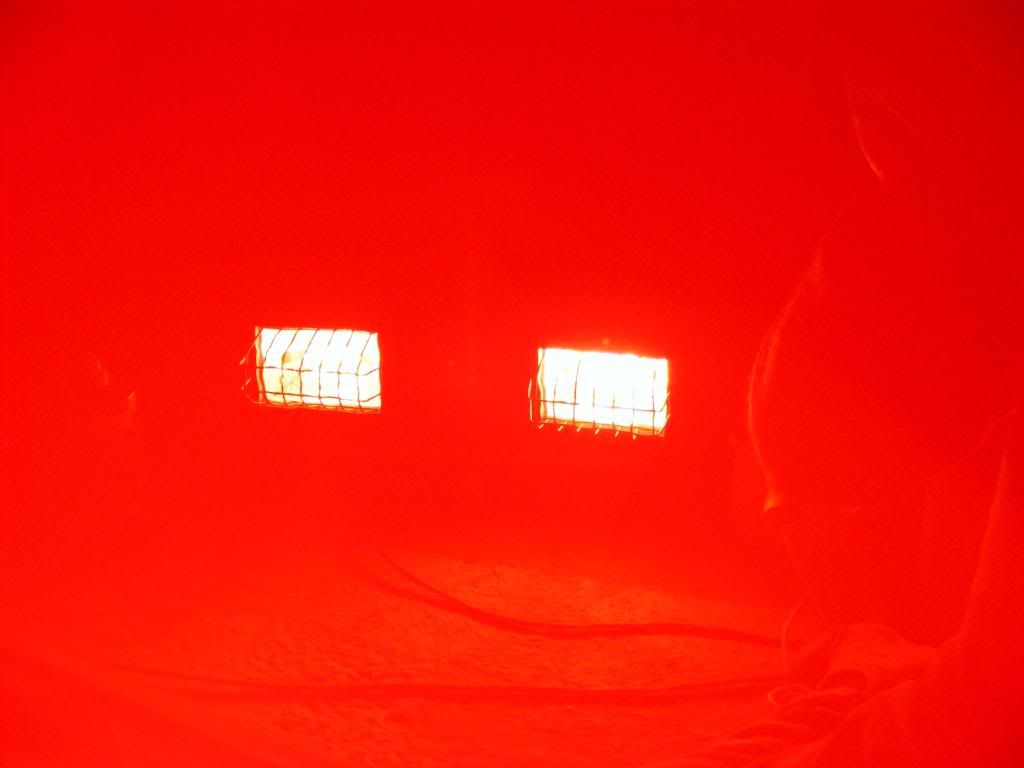
No real difference at all is apparent! The Sun Gun Clearly shows that a difference has been achieved:

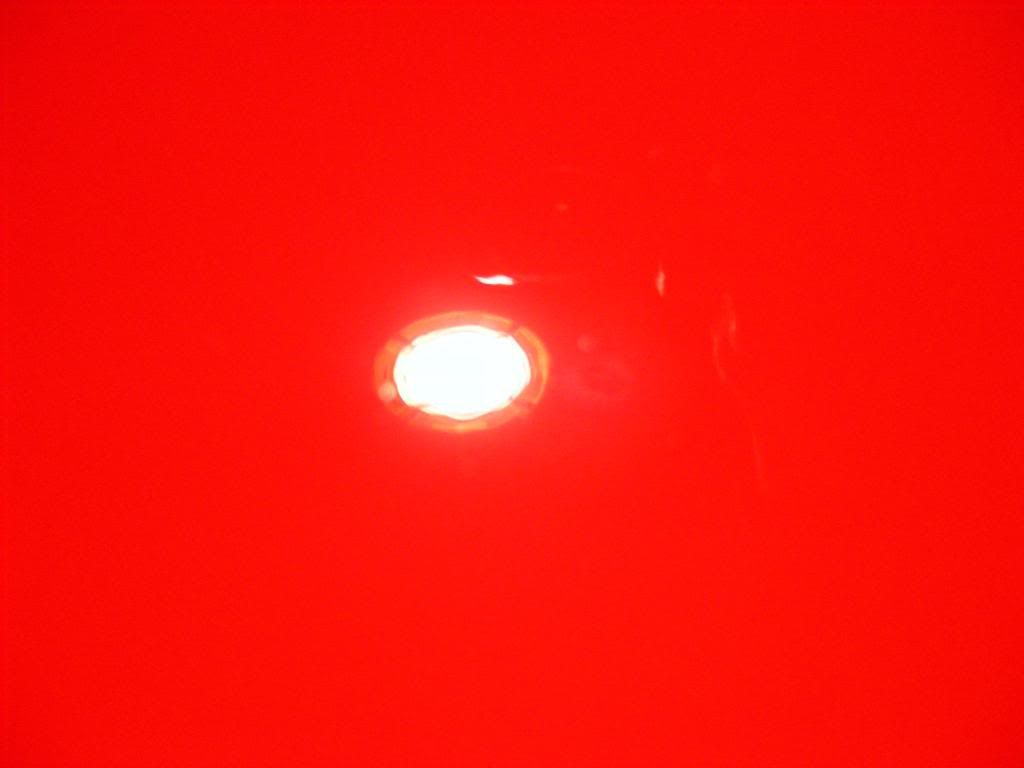
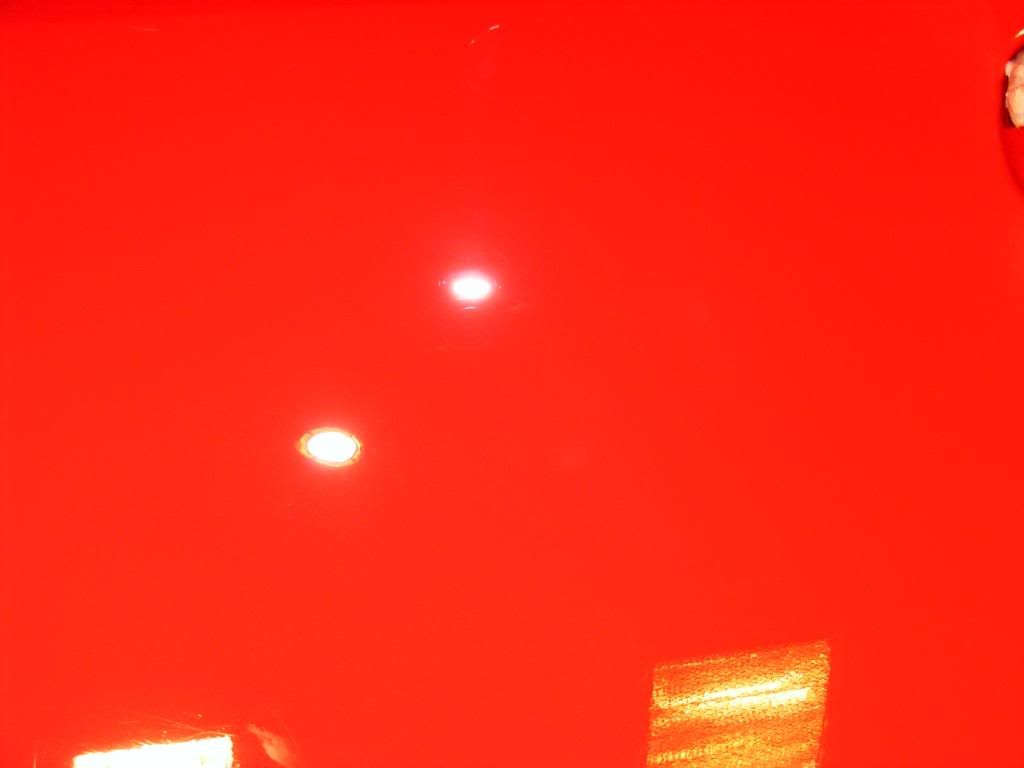
I know the Sun Gun is expensive, but I would strongly consider a bright light source with small area of some description for swirl spotting... Part of the halogens issue is the large light area (bright region). I find that a camera flash is very effective at highlighting hologramming - not practical, but will certainly give more confidence in the finish than 500W halogens will IMO.
Food for thought. And this is why holograms show up on cameras flashes. Due to its bright nature.
Also holograms are a sign of under worked abrasives and not refinishing down properly.
I hope this helps a few member and consider all available light sources, when gauging the true quality of your finish.
Gordon.

And also good at RDS:

However, 500W halogen lights are not completely flawless, and do have quite notable limitations when it comes to spotting lighter marring, especially hologramming left by a rotary polisher. The example below clearly highlights this.
Below is a picture of the paint finish taken using 500W halogens to assess:

The finish looks perfect! Good clarity evident. No sign of any marring. The truth of this finish is quite different however, as the Sun Gun highlights on the same area:

Very definite hologramming! And this was not evident using the halogen lights... The Sun Gun is a very reliable source of light for assessing paintwork at all angles, the 500W halogens hid these holograms at all angles of viewing and only with very careful movement of the light source and examining the finish very closely was any evidence of the marring picked up!
So if you are using 500W halogens as your sole light source, be very careful of what they can hide!
As a further example, here's the finish on the car examined with the 500W halogens both before and after the hologram removal:


No real difference at all is apparent! The Sun Gun Clearly shows that a difference has been achieved:



I know the Sun Gun is expensive, but I would strongly consider a bright light source with small area of some description for swirl spotting... Part of the halogens issue is the large light area (bright region). I find that a camera flash is very effective at highlighting hologramming - not practical, but will certainly give more confidence in the finish than 500W halogens will IMO.
Food for thought. And this is why holograms show up on cameras flashes. Due to its bright nature.
Also holograms are a sign of under worked abrasives and not refinishing down properly.
I hope this helps a few member and consider all available light sources, when gauging the true quality of your finish.
Gordon.
